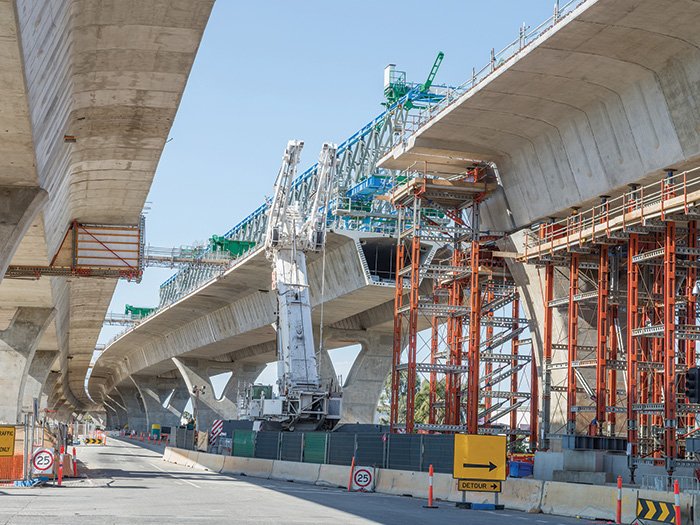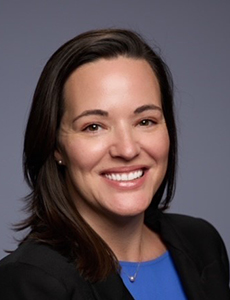Lumbar Spinal Surgery Results in Disturbing Levels of Readmissions According to This Leading Workers’ Comp Thinktank

Lower back injuries are nothing new to the workers’ comp space. They tend to be a common setback experienced by workers but can prove to be a grueling injury to recover from. When a worker requires surgery to resolve their injury, complications are bound to occur.
On May 27, the Workers’ Compensation Research Institute (WCRI) hosted a webinar titled, “Reoperation & Readmission Rates for Workers’ Compensation Patients Undergoing Lumbar Surgery.” Presenters Dr. Rebecca Yang and Dr. Randall D. Lea, along with other contributing doctors, studied the rate comparisons between workers’ comp injuries and non-workers’ comp injuries.
Prior to discussing what their data found, Lea emphasized specific study terms for clarification. Readmission, for starters, is a return to the hospital after being discharged from initial care, while reoperation is an unplanned operation that needs to be performed after the first procedure.
The lumbar spinal surgeries being analyzed in this study include discectomy or decompression, which is typically utilized for a herniated disk or bone spur that is pressing on a spinal cord nerve, and fusion, which is using bone grafts to combine two adjacent levels of the spine together.
Lea said that the objective of the study was to “actually quantify the costs of a lumbar spinal surgery for workers’ compensation patients,” a component of workers’ comp that is rarely studied in greater depth.
The Study, Broken Down
Prior to completing the study, Yang presented questions that were used to dial in on the purpose of the research. These include:
- How do readmission and reoperation rates for workers’ comp patients undergoing surgery compare to those patients of other payer groups?
- What are the reasons for reoperation and readmission instances?
- What impact does reoperation and readmission instances have on medical claim payments?
- How do these rates compare across U.S. states?
The data studied focused on lower back and spinal cord injuries occurring in 2016, with a 24-month maturation timeline to 2018. Eighteen states were studied, with a variety of size, population and workers’ comp policies. Finally, claims that involved the lower back and resulted in common lumbar spine surgeries were studied.
Thirteen percent of claims with more than 7 days of lost work time were classified as lower back injury cases, which equated to about 30,000 claims in the study. Additionally, 11.4% of cases resulted in a lumbar spine surgery, which translated to about 3,000 claims.
The Findings, Broken Down
The study was organized into four separate categories, each highlighting a component of the reasonings behind higher readmission and reoperation rates for workers’ comp patients.
30-Day and 90-Day Findings
It was imperative to note the timeframe between surgery and readmission or reoperation, if they occurred, as this allowed researchers to determine a correlation between the actual surgery itself and the reason for a readmission or reoperation.
Within the 30-day period post-hospital discharge, 7% of injured workers who underwent lumbar surgery had a readmission to hospital care compared to the 4.4-6.4% of non-workers’ comp patients who underwent the same surgeries.
When looking at the specific surgeries themselves, readmission occurred at a much greater rate for those who underwent a fusion surgery (17.1%) compared to a discectomy/decompression (3.2%). These rates are also two to three times higher than a non-workers’ comp patient.
The study also gathered data from a 90-day readmission or reoperation perspective. Yang noted that the reoperation rate in the 90-day study was similar to that of the rate in the 30-day study, which allowed them to conclude that most readmission occurrences within the 90-day period likely took place within the first 30 days after surgery.
Discovering the Root of Readmission and Reoperation Rates
The next category Yang delved into was the reasons behind these high readmission and reoperation rates for workers’ comp patients.
When it came to reoperation rates, those injured workers who underwent a fusion surgery were much more likely to return for a reoperation; 89.4% of patients experienced another fusion surgery, compared to the 56.4% of patients who had to have another discectomy.
Yang said the reason behind this stark difference could be from a mechanical of implant failure of the bone grafts or pain persistence that manifested itself in a different part of the back from the original surgical site.
In terms of readmission into the hospital, there was a variety of reasons for an injured worker’s return, which include a non-surgical medical setback, limitations in everyday activities, infection or pain. The most common cause of readmission for both discectomy and fusion patients were non-surgical medical complications.
However, the second most prominent reason for readmission for discectomy patients was infection, whereas fusion patients experienced more limitations in carrying out daily activities.
Comparing Medical Payments Per Claim and Across States
The study broke down medical payments per claim into two sections: total medical payments for the lumbar spine surgery and event-based payments, which include surgeon fees and hospital room payments.
The study presented medical payment data from patients who experienced neither readmission or reoperation and compared it to patients who experienced both.
Those who underwent discectomy surgery and readmission and reoperation had claim payments 260% higher than patients who experienced neither. Fusion patients who endured both readmission and reoperation had payments 79% higher than those who experienced neither.
Unsurprisingly, patients who underwent both readmission and reoperation had substantially higher event-based payments, as these occurrences are unplanned. Additionally, fusion surgery patients have higher medical payments per claim than discectomy surgery patients.
The final category, comparison among states, found readmission and reoperation rates varied across states, with some like North Carolina and Minnesota recording only 11%, compared to California’s 22%. Yang said the studying this difference between states will be studied in the future.
Concluding the Study
Yang stated that at the conclusion of the study, it was found that a higher nonoperative readmission rate for fusion surgeries was the catalyst for a higher readmission rate for either readmission or reoperation for both discectomy and fusion patients.
While the study found valuable information on keeping recovered injured workers healthy, Yang hoped that the findings would spark a fire within the workers’ comp industry.
“We hope our findings here trigger workers’ comp policymakers and stakeholders to start thinking about the important questions: what factors may be underlying in these results? What policies may lead to these results? And most importantly, where are the opportunities for improvement in these medical treatments for injured workers,” she said. &













